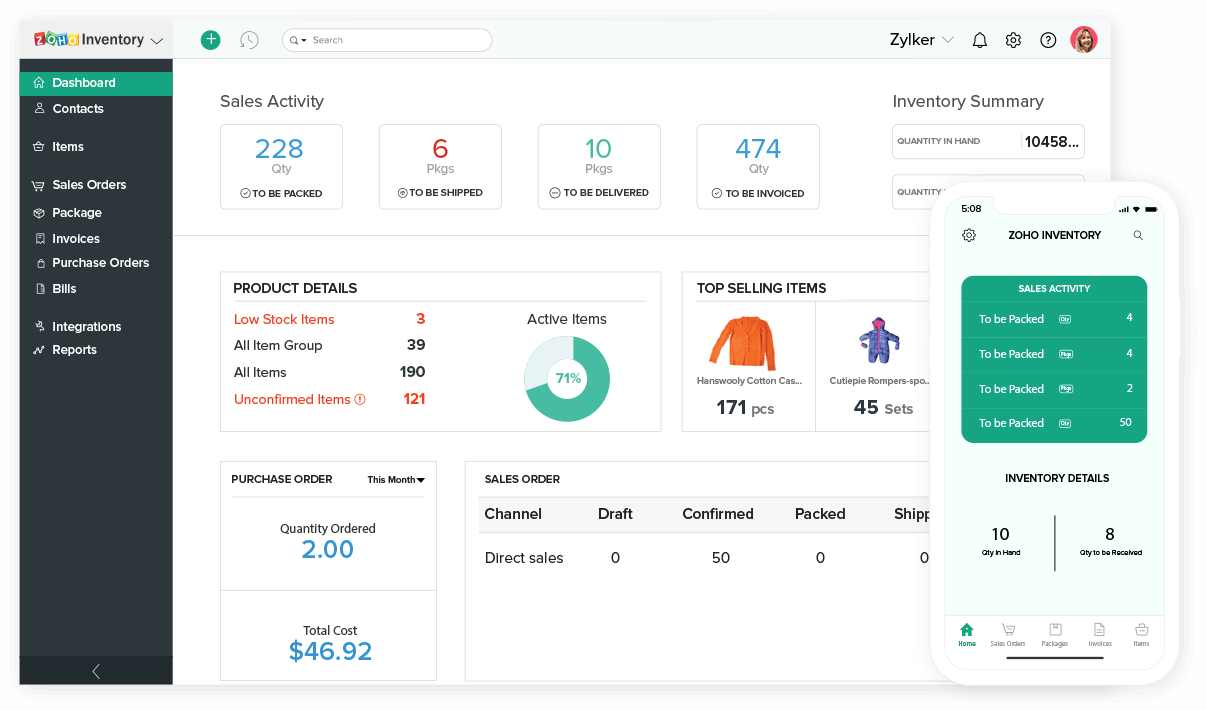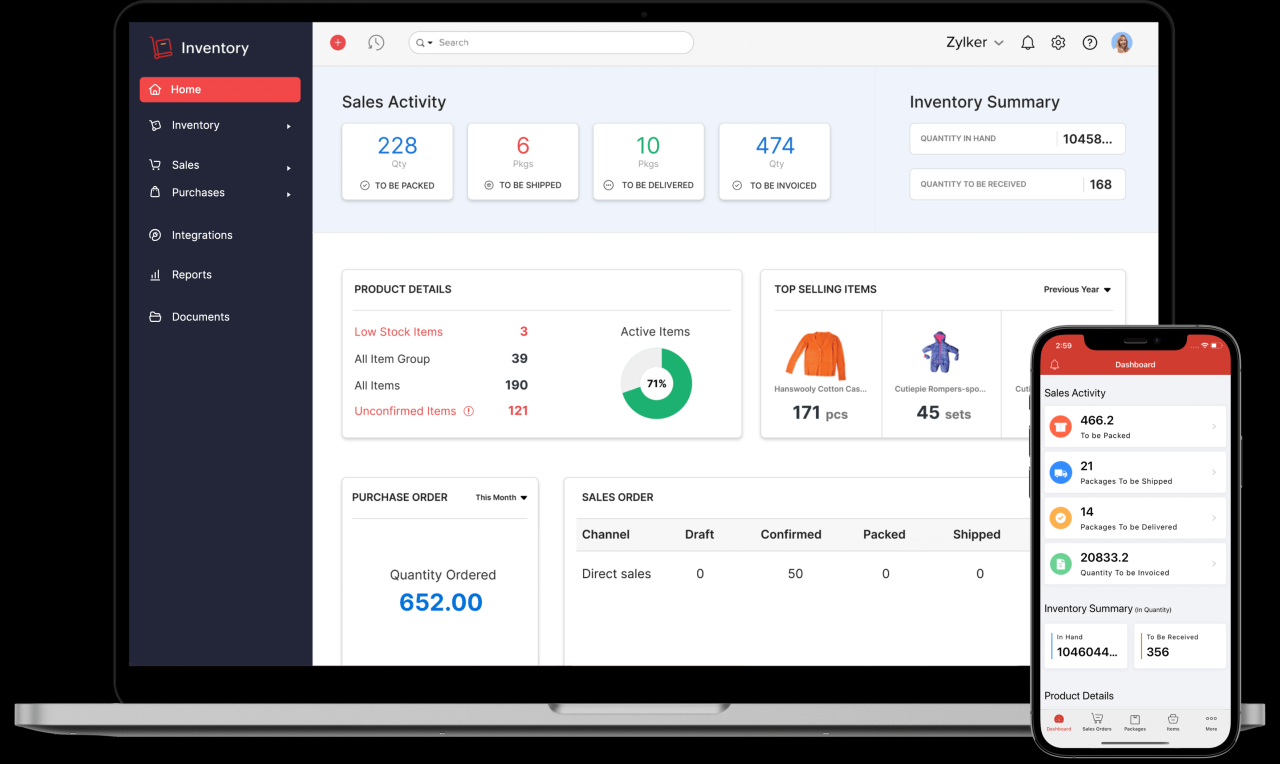
Mastering the Flow: The Indispensable Role of Business Inventory Software
In the dynamic world of commerce, inventory is more than just goods on a shelf; it’s the lifeblood of a business. It represents capital, potential revenue, and customer satisfaction. Yet, for many companies, managing this critical asset remains a persistent challenge, often fraught with inefficiencies, inaccuracies, and lost opportunities. Enter Business Inventory Software – a powerful, indispensable tool that has revolutionized how companies track, manage, and optimize their stock, transforming chaos into streamlined efficiency.
This article delves into the core of business inventory software, exploring its definition, the problems it solves, its essential features, the myriad benefits it offers, key considerations for choosing the right system, and a glimpse into its future.
The Unseen Burden: Why Manual Inventory Fails
Before appreciating the solution, it’s crucial to understand the depth of the problem. For decades, businesses relied on manual methods – spreadsheets, paper ledgers, and even memory – to manage their inventory. While seemingly cost-effective initially, these approaches are breeding grounds for errors and inefficiencies:
- Inaccurate Stock Counts: Human error is inevitable, leading to discrepancies between physical stock and recorded figures. This results in either frustrating stockouts (lost sales, angry customers) or costly overstocking (tied-up capital, storage costs, obsolescence).
- Lack of Real-time Visibility: Manual systems offer a snapshot, not a live feed. Decision-makers often operate with outdated information, hindering agile responses to market changes or supply chain disruptions.
- Time-Consuming Processes: Physically counting, recording, and reconciling inventory is a laborious, time-intensive task that diverts valuable human resources from more strategic activities.
- Inefficient Order Fulfillment: Without precise knowledge of stock levels and locations, picking, packing, and shipping become slow and error-prone, impacting delivery times and customer satisfaction.
- Poor Forecasting: Manual data makes it nearly impossible to identify trends, predict demand accurately, or optimize purchasing, leading to a reactive rather than proactive inventory strategy.
- Lost Revenue and Increased Costs: The cumulative effect of stockouts, overstocking, operational inefficiencies, and wasted labor directly impacts the bottom line, eroding profits and hindering growth.
These challenges highlight a fundamental truth: modern businesses, regardless of size, cannot afford to manage their inventory manually. The competitive landscape demands precision, speed, and intelligence, which only a specialized software solution can provide.
What Exactly Is Business Inventory Software?
At its core, Business Inventory Software is a digital system designed to track and manage goods, products, and materials throughout their lifecycle within a business. From the moment they arrive at a warehouse to their final departure to a customer, the software provides a centralized, real-time record of every item.
More than just a digital spreadsheet, it’s an integrated platform that automates many inventory-related tasks, provides deep insights through data analysis, and connects various business functions. It serves as the single source of truth for all inventory data, ensuring consistency and accuracy across departments like sales, purchasing, accounting, and warehousing.
Key Features and Functionalities
Modern inventory software is incredibly robust, offering a suite of features designed to address every aspect of inventory management:
- Real-time Inventory Tracking: This is the cornerstone. The software provides an up-to-the-minute view of stock levels across all locations (warehouses, retail stores, transit). Every transaction – sale, return, receipt, transfer – is immediately updated, ensuring data accuracy.
- Multi-Location Management: For businesses with multiple warehouses, stores, or distribution centers, the software allows centralized management and visibility of inventory across all sites, facilitating efficient stock transfers and fulfilling orders from the nearest available location.
- Order Management (Purchase & Sales):
- Purchase Order (PO) Management: Automates the creation, sending, and tracking of purchase orders to suppliers, linking incoming goods directly to expected inventory increases.
- Sales Order (SO) Management: Streamlines the processing of customer orders, allocating stock, and generating invoices, often integrating with e-commerce platforms and POS systems.
- Warehouse Management (WMS Lite): While not a full-fledged WMS, inventory software often includes features for:
- Receiving: Efficiently logs incoming goods, cross-referencing with POs.
- Picking & Packing: Guides staff through optimal picking routes and generates packing slips.
- Shipping: Integrates with shipping carriers, generates labels, and tracks shipments.
- Location Management: Assigns and tracks specific bin or shelf locations for items, optimizing storage and retrieval.
- Barcode Scanning & RFID Integration: Supports the use of barcode scanners and RFID (Radio-Frequency Identification) technology for rapid, accurate data entry during receiving, picking, counting, and shipping, drastically reducing manual errors.
- Inventory Optimization & Forecasting: Utilizes historical sales data, seasonal trends, and supplier lead times to suggest optimal reorder points, safety stock levels, and purchasing quantities, helping prevent both stockouts and overstocking.
- Reporting & Analytics: Generates comprehensive reports on stock levels, sales velocity, inventory turnover, cost of goods sold (COGS), supplier performance, and more. These insights are crucial for data-driven decision-making.
- Lot & Serial Number Tracking: Essential for industries like food, pharmaceuticals, and electronics, this feature tracks individual items or batches of items from creation to sale, crucial for quality control, warranty tracking, and product recalls.
- Returns Management (RMA): Simplifies the process of handling customer returns, ensuring returned items are correctly re-entered into inventory or designated for repair/disposal.
- Integration Capabilities: Seamlessly connects with other essential business systems such as:
- Accounting Software (e.g., QuickBooks, Xero): Automatically updates financial records for inventory value, COGS, and sales revenue.
- E-commerce Platforms (e.g., Shopify, Magento): Synchronizes online sales and stock levels in real-time.
- Point-of-Sale (POS) Systems: Updates inventory immediately after an in-store sale.
- CRM Systems: Provides sales teams with accurate product availability information.
The Transformative Benefits of Inventory Software
Implementing a robust inventory software solution delivers a multitude of tangible and intangible benefits that directly impact a business’s operational efficiency, financial health, and competitive edge:
- Improved Accuracy and Visibility: Eliminates guesswork and manual errors, providing a precise, real-time view of inventory across all locations. This clarity is foundational for all other benefits.
- Optimized Stock Levels: By leveraging accurate data and forecasting tools, businesses can strike the perfect balance – reducing holding costs associated with excess inventory while preventing costly stockouts that lead to lost sales and customer dissatisfaction.
- Enhanced Operational Efficiency: Automates repetitive tasks like data entry, stock counting (via cycle counting features), and order processing, freeing up staff to focus on higher-value activities. Picking and packing become faster and more accurate.
- Better Decision-Making: With comprehensive reports and analytics, managers can make informed decisions about purchasing, pricing, promotions, and supply chain strategies, leading to greater profitability.
- Increased Customer Satisfaction: Faster order fulfillment, accurate deliveries, and fewer stockouts translate directly into happier customers, fostering loyalty and repeat business.
- Significant Cost Savings: Reductions in spoilage, obsolescence, storage costs, manual labor, and expedited shipping fees all contribute to substantial savings.
- Scalability and Growth: The software provides a structured framework that can easily accommodate business growth, new product lines, or additional locations without overhauling the entire inventory system.
- Compliance and Traceability: For regulated industries, detailed tracking of lot numbers, serial numbers, and expiration dates ensures compliance with industry standards and facilitates rapid recalls if necessary.
- Reduced Theft and Shrinkage: Better tracking and accountability make it harder for inventory to go missing, whether due to internal theft or administrative errors.
Choosing the Right Inventory Software: A Strategic Decision
Selecting the ideal inventory software is not a one-size-fits-all proposition. It requires careful consideration of a business’s unique needs, industry, and budget. Here are key factors to evaluate:
- Assess Your Current Needs and Future Growth: What are your biggest pain points? What functionalities are absolutely essential? How do you expect your business to grow in the next 3-5 years?
- Industry-Specific Features: Does the software cater to your industry’s unique requirements (e.g., batch tracking for food, serial numbers for electronics, expiry dates for pharmaceuticals)?
- Scalability: Can the software grow with your business? Can it handle increased transaction volumes, more products, or additional locations without significant performance degradation?
- Integration Capabilities: How well does it integrate with your existing accounting, e-commerce, POS, and CRM systems? Seamless integration is crucial to avoid data silos and manual data transfer.
- User-Friendliness: An intuitive interface and ease of use are paramount for quick adoption by staff and to minimize training time and errors.
- Deployment Options:
- Cloud-based (SaaS): Hosted by the vendor, accessible via web browser. Offers lower upfront costs, automatic updates, and scalability.
- On-premise: Installed on your company’s servers. Offers more control and customization but requires IT infrastructure and maintenance.
- Vendor Support and Training: What kind of support does the vendor offer (technical support, training resources, documentation)? A responsive support team is invaluable during implementation and ongoing use.
- Security: How does the vendor protect your sensitive inventory data?
- Cost: Beyond the licensing fees, consider implementation costs, training, customization, and ongoing maintenance or subscription fees.
The Future of Inventory Management Software
The landscape of inventory management is continuously evolving, driven by technological advancements. The future of inventory software will likely be characterized by:
- Artificial Intelligence (AI) and Machine Learning (ML): For highly accurate demand forecasting, predictive analytics to anticipate supply chain disruptions, and automated reordering based on complex algorithms.
- Internet of Things (IoT): Sensors on shelves, pallets, and in products themselves can provide real-time location, temperature, and condition data, enabling truly smart warehouses and autonomous inventory monitoring.
- Blockchain Technology: To enhance supply chain transparency and traceability, providing an immutable record of product movement and authenticity.
- Robotics and Automation: Integration with automated guided vehicles (AGVs), drones for inventory counting, and robotic picking systems within warehouses.
- Enhanced Mobile Accessibility: Robust mobile apps that allow warehouse staff, sales representatives, and managers to access and update inventory data from anywhere, at any time.
Conclusion
In today’s fast-paced business environment, efficient inventory management is not merely an operational task; it’s a strategic imperative. Business inventory software moves a company beyond the limitations of manual processes, offering unparalleled accuracy, visibility, and control over one of its most valuable assets. By transforming raw data into actionable insights, it empowers businesses to optimize operations, reduce costs, boost customer satisfaction, and ultimately, drive sustainable growth.
For any business looking to thrive in the modern marketplace, investing in the right inventory software is no longer a luxury but a fundamental necessity – a powerful tool to master the flow of goods and secure a competitive edge.

